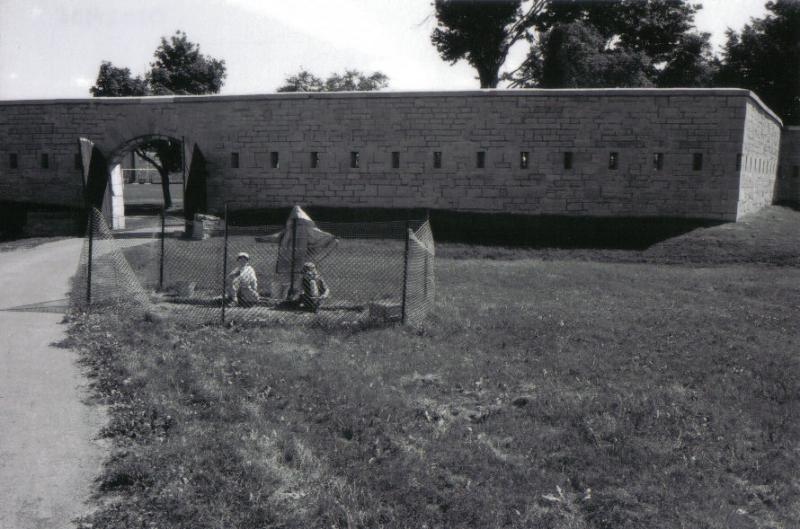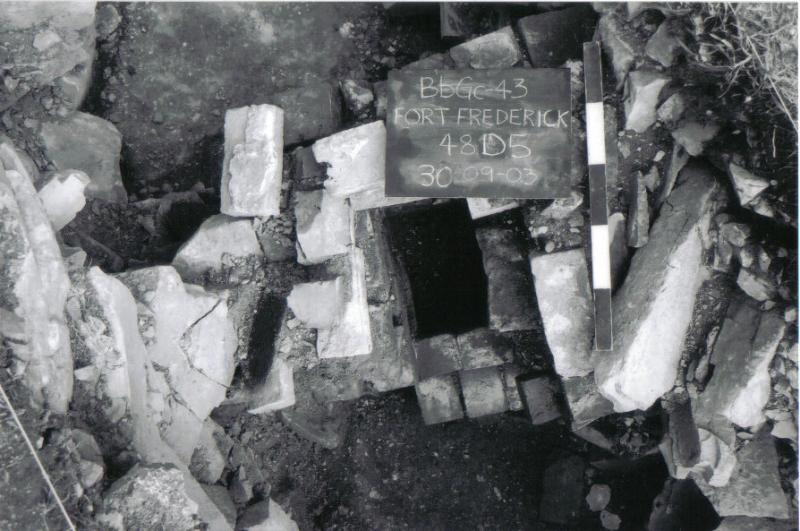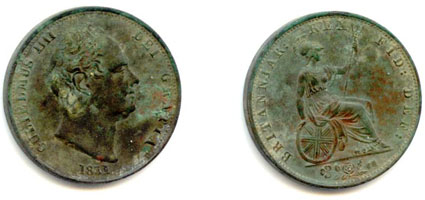 The 2003 “Can You Dig It?”© Summer Archaeology Program operated for 6 one-week long sessions from July 7th to August 22nd, and had a total of 66 participants with ages ranging from 8-16. The chosen site for this season’s excavations was the site of the 1812 Fort at Point Frederick at the Royal Military College of Canada in Kingston, specifically to the East and South of the Fort Frederick Tower.
The 2003 “Can You Dig It?”© Summer Archaeology Program operated for 6 one-week long sessions from July 7th to August 22nd, and had a total of 66 participants with ages ranging from 8-16. The chosen site for this season’s excavations was the site of the 1812 Fort at Point Frederick at the Royal Military College of Canada in Kingston, specifically to the East and South of the Fort Frederick Tower.
Following the 2003 field season excavations at Fort Frederick, RMC, some understanding of the occupation and use of the War of 1812 Fort has developed. With the outbreak of war in 1812 a Battery was established at the tip of Point Frederick to provide support for the construction of buildings and the Dock Yard. A formal Blockhouse structure of a good size, 45’ by 45’, was built along with supporting buildings and the Battery for 6 and 9 pounder guns. The Fort was in extensive use throughout the war and took part in the exchange with an American Squadron on November 12, 1812.
Following the signing of the Treaty of Paris the Fort went into a phase of lesser use and manning, and eventual decline, only receiving a reprieve with the rest of Point Frederick during the crisis of 1837. Many of the Fort buildings were in a terrible state of repair and likely abandoned, such as in the case of the Royal Artillery Barracks, before the new Martello Tower and earthworks of Fort Frederick were constructed in 1846.
 With the construction of the new Martello Tower, the remaining standing buildings of the War of 1812 Fort were demolished often pushed in on themselves. The Blockhouse was filled with the debris of the building, likely minus what could be salvaged, and the foundation was additionally filled with limestone debris from the construction of the Martello Tower. The entire parade grounds surrounding the Tower were resurfaced, primarily with a pavé, as part of the work to “landscape” the Fort and construct the defensive earthworks.
With the construction of the new Martello Tower, the remaining standing buildings of the War of 1812 Fort were demolished often pushed in on themselves. The Blockhouse was filled with the debris of the building, likely minus what could be salvaged, and the foundation was additionally filled with limestone debris from the construction of the Martello Tower. The entire parade grounds surrounding the Tower were resurfaced, primarily with a pavé, as part of the work to “landscape” the Fort and construct the defensive earthworks.

In the modern history of Point Frederick the Fort was subject to organized trenching by the RMC museum curator Pip Nation and a group of summer students. The Blockhouse and the Privy were dug. The Blockhouse was subject to trenching adjacent to the walls and cement capping on all surviving walls. These “excavations” took place in 1969, and information on these diggings is sparse at best. Thus the planned excavation for 2003 provided an opportunity to assess the damage caused by these previous efforts.

 The 2003 “Can You Dig It?”© Summer Archaeology Program operated for 6 one-week long sessions from July 7th to August 22nd, and had a total of 66 participants with ages ranging from 8-16. The chosen site for this season’s excavations was the site of the 1812 Fort at Point Frederick at the Royal Military College of Canada in Kingston, specifically to the East and South of the Fort Frederick Tower.
The 2003 “Can You Dig It?”© Summer Archaeology Program operated for 6 one-week long sessions from July 7th to August 22nd, and had a total of 66 participants with ages ranging from 8-16. The chosen site for this season’s excavations was the site of the 1812 Fort at Point Frederick at the Royal Military College of Canada in Kingston, specifically to the East and South of the Fort Frederick Tower. With the construction of the new Martello Tower, the remaining standing buildings of the War of 1812 Fort were demolished often pushed in on themselves. The Blockhouse was filled with the debris of the building, likely minus what could be salvaged, and the foundation was additionally filled with limestone debris from the construction of the Martello Tower. The entire parade grounds surrounding the Tower were resurfaced, primarily with a pavé, as part of the work to “landscape” the Fort and construct the defensive earthworks.
With the construction of the new Martello Tower, the remaining standing buildings of the War of 1812 Fort were demolished often pushed in on themselves. The Blockhouse was filled with the debris of the building, likely minus what could be salvaged, and the foundation was additionally filled with limestone debris from the construction of the Martello Tower. The entire parade grounds surrounding the Tower were resurfaced, primarily with a pavé, as part of the work to “landscape” the Fort and construct the defensive earthworks.
